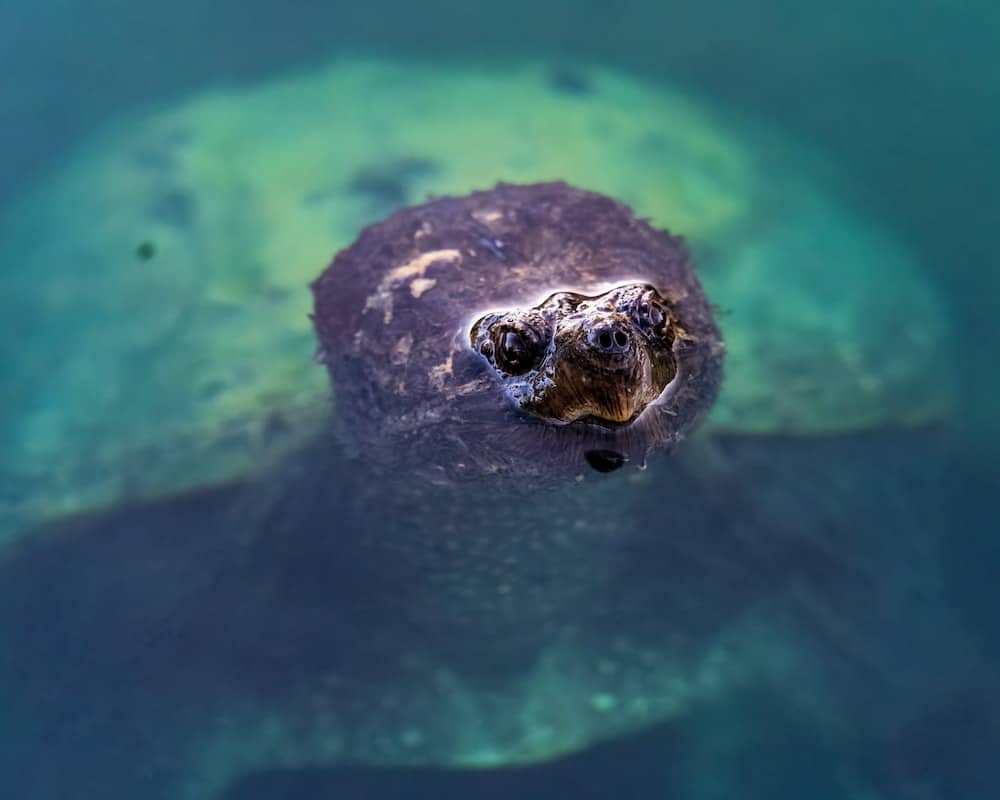If you have ever come across a box turtle, you might have asked yourself, “Can these tiny creatures even swim?” Well, we would say that this is a valid question, and we have the answer in this article! After all, you may know that turtles are known as the “swimming creatures,” and box turtles have a unique appearance that can make you think otherwise.
Yes, they can swim! Box Turtles are originally known to come from Native America and are widely recognized as Terrestrial animals. However, they occasionally do require water to survive. You can easily differentiate between these reptiles and a regular pond turtle based on their domed shells.
However, unlike other turtle species, these animals can entirely retract into their shells.
Can Box Turtles Swim?
To give you a short and quick answer: Yes! They can actually swim. They are generally seen swimming in the wild.
However, the Coahuilan box turtle, a specific species, is the only aquatic box turtle known, and they generally only swim to cool down or only if they really have to. Adding to this, the ability of box turtles entirely depends on their subspecies.
Hence, they do not spend a lot of time in the water, and they definitely do not sleep in it either. They can just swim if they really want to.
However, these reptiles are known to be clumsy swimmers since they have short feet with tiny individual toes. This, in turn, helps them to swim across from one end to another.
However, there are certain limitations when it comes to swimming. You will read more about it further in this article.
Are They Underwater Swimmers?
As we have already established, these reptiles are not very strong swimmers. If a box turtle has to cross a river or pond from one end to the other, and if it is quite deep, they could likely sink!
These reptiles are known to swim short distances. You will always find them swimming only in shallow areas. After spending time swimming, they tend to require rest, so they return to land.
Therefore, unlike other species of turtles, there is a high chance that you might never find them swimming underwater. Hence, if they do want to swim, you will only find them swimming shallow in a shallow area.
Is It Safe For The Reptiles To Swim?
Even though these animals can swim up to some point, you must keep in mind that they are not professional swimmers like other aquatic animals. Their shells are comparatively not sturdy enough, which can be dangerous for them if left unattended.
Therefore, if you want to introduce your pet to water, it is extremely important to provide a controlled and safe environment.
To ensure that it is safe for them to swim, do not leave your turtle in deep water. A tiny tank with a small amount should be more than enough for your pet to enjoy their time without being supervised.
At this point, you must also keep in mind to provide them with a shore they can go to once they get tired of swimming.
Some people find that they might keep swimming against the glass of the tank, there are various reasons, and you can read about them here.
Can They Swim For a Long Period Of Time?
No, they can find it very difficult to swim for a long time. Just like their other species, box turtles are not aquatic animals and hence cannot spend a lot of time swimming.
You will often find these reptiles swimming on top of surfaces such as rivers, ponds, and lakes. This helps them reach their destination to the shore quicker and faster, without having to swim much.
These reptiles will only swim if they have somewhere to be. So it is highly unlikely for you to see them swimming in the middle of a large lake, river, or pond.
However, there are chances where you can find them swimming in shallow water. Since they tend to spend a long time in shallow areas, you will only see them go as deep as they can for them to swim out in a short period of time.
However, there is one exception when it comes to these animals swimming for a long period of time. The Coahuilan box turtle is known to swim for a long period of time. They are known to spend about 90% of their lifetime just being in the water!
Do They Require Water?
Just like all turtles, they require water in order to survive. Although these reptiles look similar to a tortoise, these creatures require much more to survive. They also comparatively need to be in a much more humid client.
However, it is important to keep in mind that the amount required is entirely dependent on the type of species you have.
Moreover, having your pet in a shallow environment is highly recommended as they can receive the adequate amount of water they require. You need to make sure that it is not too deep so that they do not end up drowning.
How Much Do They Require?
There are three things to follow when it comes to understanding how much they might require.
- Water Storage
These reptiles, in any case, need to be in areas where there is less water. Therefore, if you have a pet at home, you need to make sure that you fill the tank just enough for the turtle to fit in.
- Depth
The depth should not be too deep. Instead, they best survive in shallow water. If it gets too deep, there is a high possibility for them to drown instantly.
- Chemicals
As you read further, you will understand that there are certain chemicals that you must avoid at all costs. It is very important to ensure that the water does not contain any chlorine whatsoever.
Even though they are mainly land animals, they do require some amount of water to survive.
Apart from this, they use water as a source of hydration. This is why you need to make sure that the water area for your pet is not too deep and just enough for them to survive and have fun at the same time.
Can They Be Hydrated Using Tap Water?
Although they are not aquatic creatures, they require water to survive. As you may have read above, they also require a high humid temperature. They need to be soaked regularly, while their shells need to remain moist at all times. However, here the question arises if ‘using tap water is safe or not.’
To answer this question: No, it is not recommended to hydrate them using tap water. The chloramines and chlorine that are found in the tap can be very toxic. These chemicals generally tend to irritate their eyes. They can also leave certain white spots on them.
Therefore, the best option to hydrate your pet would be to use either distilled or mineral water. You can provide them with a few liters per week, and your pet should be good to go!
However, once again, the only exception, in this case, would be a Coahuilan box turtle.
If you have a Coahulian box turtle at home, then you will need an aquarium. You can fill this aquarium using regular tap water, but make sure you use a water conditioner.
Conclusion
Although these reptiles may not be in the same league as sea turtles, they do have the ability to swim. They are clumsy swimmers, but they do know how to make their way to survive. They can paddle and swim, but they are not known to be long-term swimmers like other aquatic creatures.
However, if it is too deep, it might end up harming them leading to an unfortunate event.
Therefore, it is important to provide a controlled and safe environment for your pet. Don’t forget that they are mainly terrestrial animals, and spending too much time with water can, in turn, harm them.
These reptiles, with their adorable tiny legs and looks, are highly adaptive in nature, and they will continue to amaze us with this. So next time you come across a box turtle, or if you decide to adopt one of these reptiles, make sure you take the time to admire their various abilities to adapt on both water as well as land.




